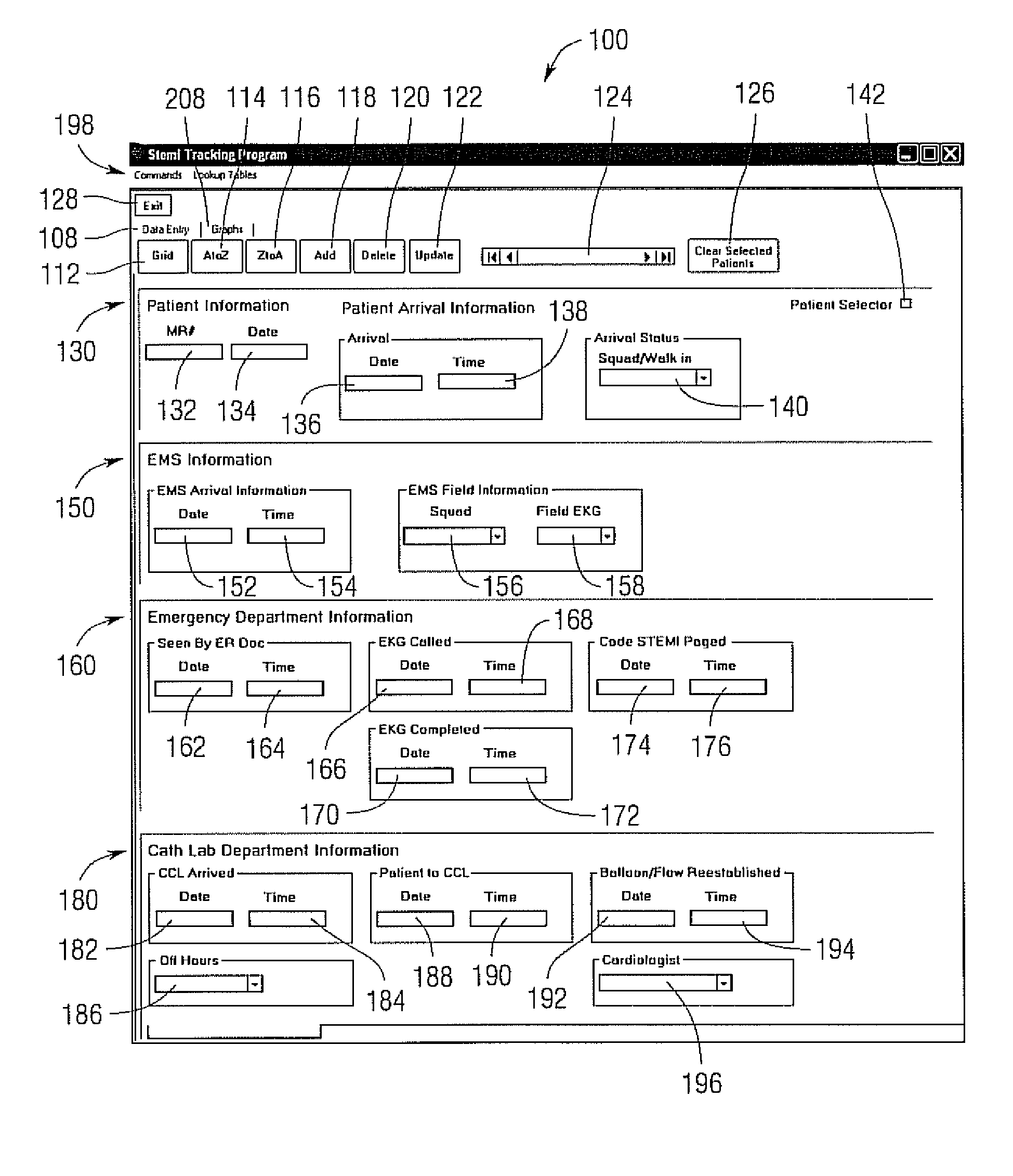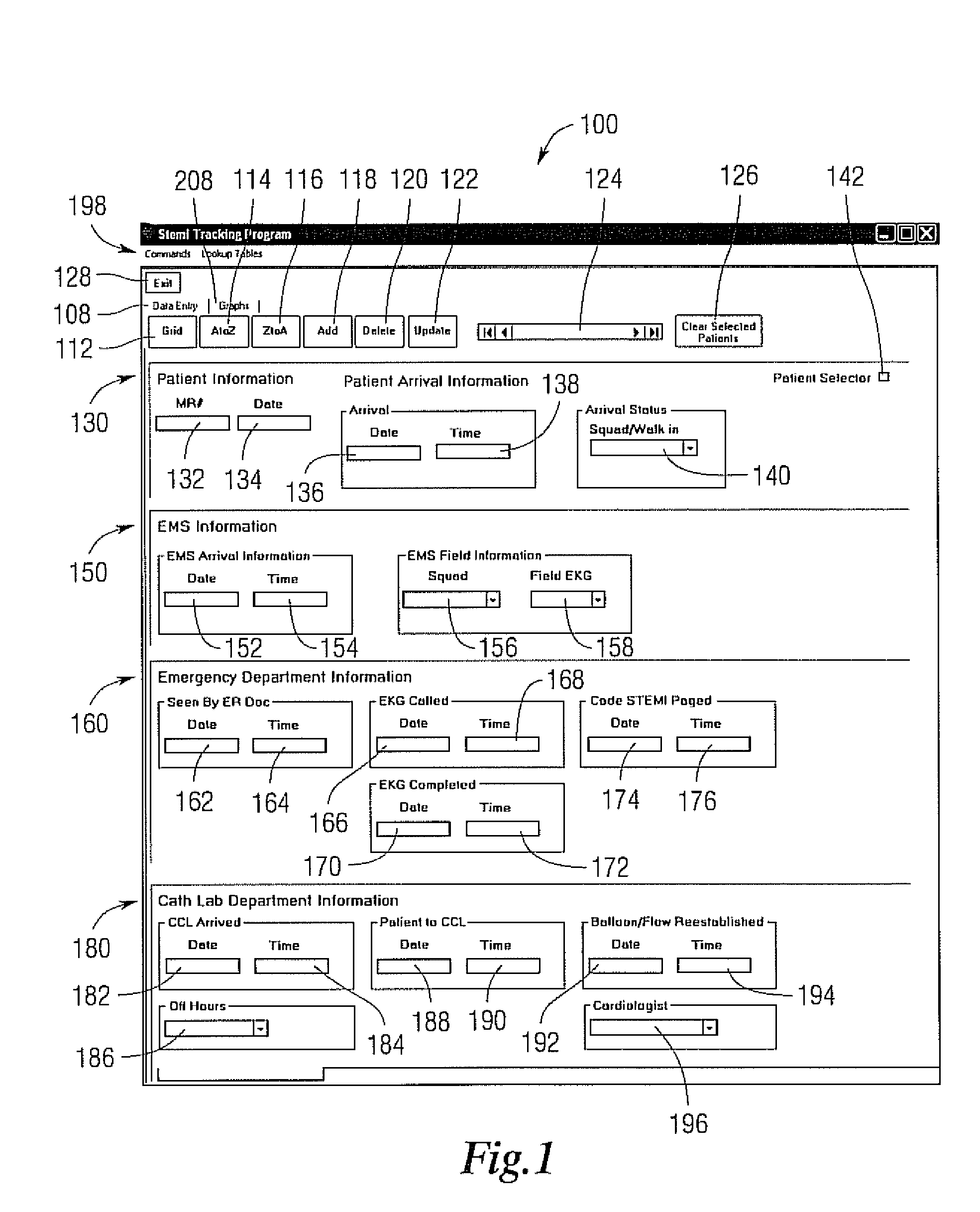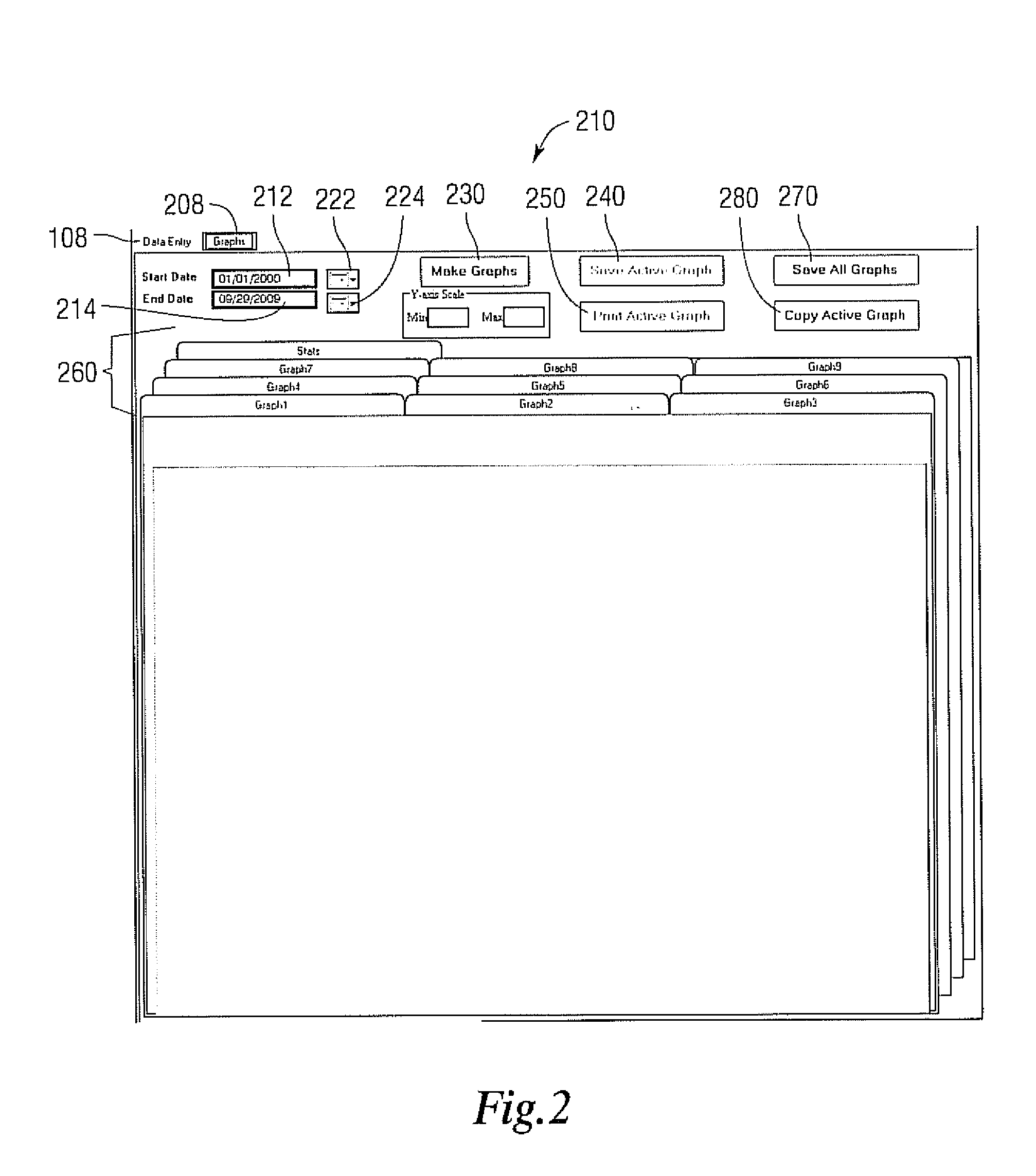Method and System for Transforming Patient Care
a patient care and patient technology, applied in healthcare informatics, data processing applications, healthcare resources and facilities, etc., can solve the problems of affecting the care of patients, so as to improve regional paramedic education, reduce mortality and morbidity rate, and transform patient care
- Summary
- Abstract
- Description
- Claims
- Application Information
AI Technical Summary
Benefits of technology
Problems solved by technology
Method used
Image
Examples
Embodiment Construction
[0015]The system user enters key time parameters associated with a patient's care, from their initial contact, either with the emergency medical service (EMS) or hospital emergency department if the patient walks in, to the time of having the appropriate procedure performed. These time points are used to calculate the time intervals during the patient's treatment travel. Such a system may be hosted on a dedicated computer system, or distributed over a network including the internet.
[0016]When the system is implemented as a computer program, a log on screen may appear. A case sensitive password can be used to allow access to the input form to prevent unauthorized entry into the database. The password may include text, biometric, authentication card and other known methods to restrict access to computerized systems. Individual log-ins may also be tracked along with records created or modified during a logged in session. In one example, a password or log-in may be time stamped and only...
PUM
 Login to View More
Login to View More Abstract
Description
Claims
Application Information
 Login to View More
Login to View More - R&D
- Intellectual Property
- Life Sciences
- Materials
- Tech Scout
- Unparalleled Data Quality
- Higher Quality Content
- 60% Fewer Hallucinations
Browse by: Latest US Patents, China's latest patents, Technical Efficacy Thesaurus, Application Domain, Technology Topic, Popular Technical Reports.
© 2025 PatSnap. All rights reserved.Legal|Privacy policy|Modern Slavery Act Transparency Statement|Sitemap|About US| Contact US: help@patsnap.com



